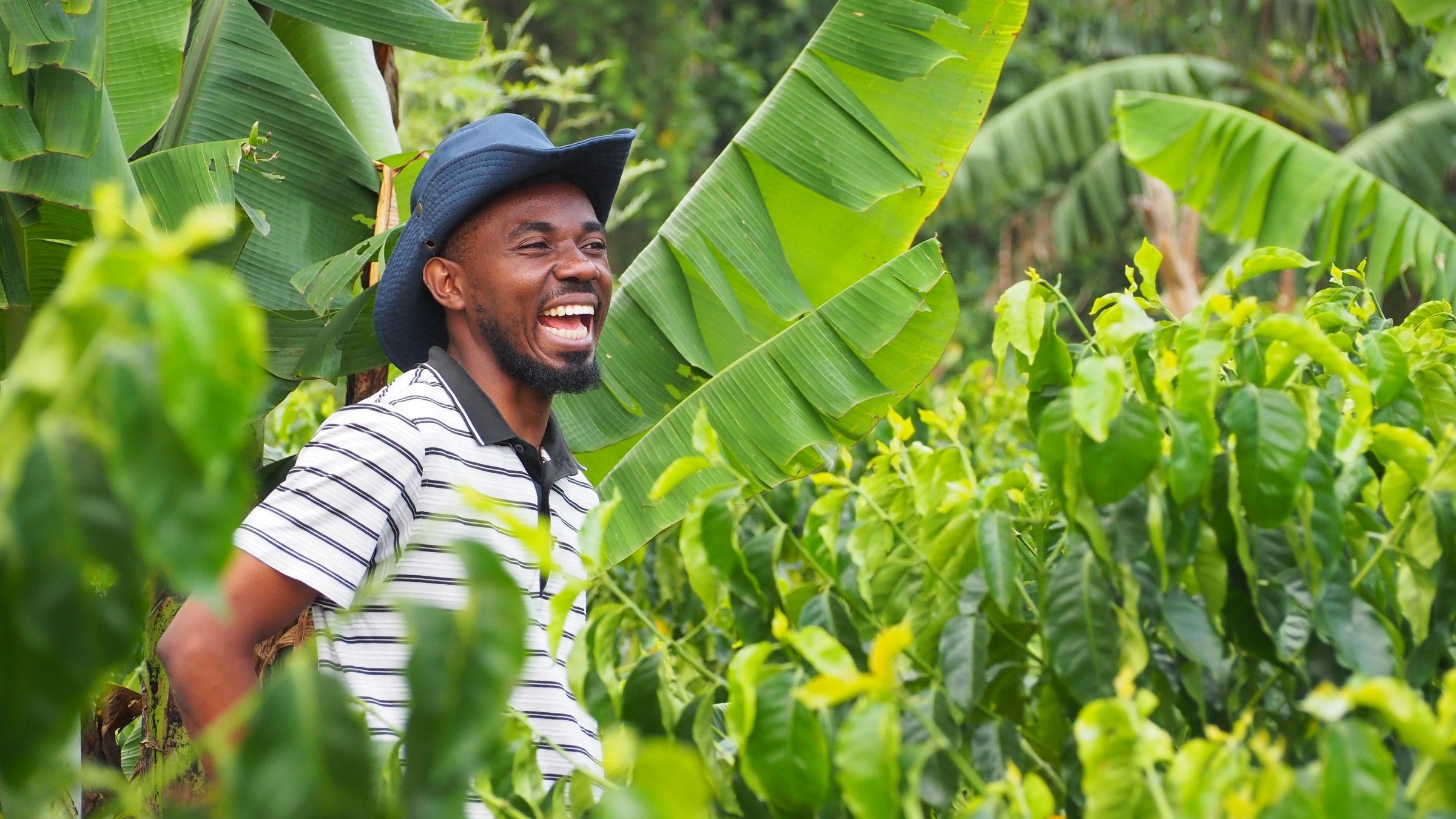Since Fiona visited Uganda in 2022, we've often found ourselves returning to the Rwenzori Mountains (among the leading contenders for the title of 'Mountains of the Moon', thought by Ptolemy and other ancient geographers to be the source of the Nile) to source coffee.
This month we’ve launched another delicious natural-processed offering, a community lot from the smallholder farmers of Nyabirongo in collaboration with our friends at Agri Evolve.
Uganda's Coffee History
Spectacular landscapes and wildlife abound in Uganda—there’s a reason its nickname is ‘the Pearl of Africa’. The towering, snow-capped Rwenzori Mountains dominate the west of the country while its many national parks are home to elephants, cheetahs, gorillas and much more. It's also one of the few countries in the world where coffee grows natively, with indigenous robusta trees still growing around Lake Victoria.
Robusta coffee was first domesticated by the Baganda people who used it for cultural and medicinal purposes, and it has been part of Uganda’s wider cultural life for centuries. The British colonial government established large estates for robusta cultivation in the early 20th century, and also introduced robusta's higher-quality but fragile cousin Arabica to the country.
Uganda’s coffee production had its ups and downs over the course of the century, becoming the country’s main export in the 40s but also experiencing sharp production drops, especially in the 90s due to drought and the collapse of the International Coffee Agreement in 1989.
Speciality Coffee on the Grow
Today robusta coffee continues to play a crucial role in Uganda's economy, although high-grown arabica is increasingly important and sought-after by speciality roasters. High altitudes and cool temperatures make the Rwenzoris ideal for growing arabica coffee, while the myriad microclimates and prevalence of shade-growing lead to healthier plants and more complex coffees.
While Uganda is the eighth largest coffee producer in the world, most of that is due to its robusta production. Just 20% of the 6 million bags of coffee exported in 2023 were arabica. Most of this coffee is grown by farmers working tiny parcels of land—there are more smallholder coffee farmers in Uganda than in any other producing country. A total of 1.7 million family farms average a quarter hectare each, and of these around 300,000 are arabica producers growing in the Rwenzoris as well as to the east near Mount Elgon.
Introducing Uganda Nyabirongo
Our new Uganda Nyabirongo comes from a small community in the foothills of the Rwenzoris. It has been sourced from a large number of smallholder farmers living and working in the area, with over 2700 farmers from the area bringing their ripe cherries to the Agri Evolve washing station for processing.
Regular turning of the cherries on raised beds enables them to dry slowly and for the full flavours to be absorbed into the coffee beans. Once the correct level of drying has been achieved the coffee is hulled, cleaned and graded by the modern machinery in Agri Evolve’s dry mill. This includes use of a colour sorter to ensure the beans are of the highest standard.
DID YOU KNOW?
- Most smallholder farmers intercrop their coffee trees with shade trees like bananas, as well as maize, rice and other staples. The majority of the smallest-scale farmers cannot afford pesticides and fertiliser, thus making much of Uganda’s coffee production passively organic.
- Uganda is one of the few countries to produce coffee nearly year-round. Almost all growing regions have a main crop as well as a second, smaller harvest known as a “fly crop”.
- As with other countries, Uganda’s coffee production is under threat from a heating climate. Rising temperatures at lower altitudes is leading to more instances of pests and disease, while drought continues to impact farms around the country.

